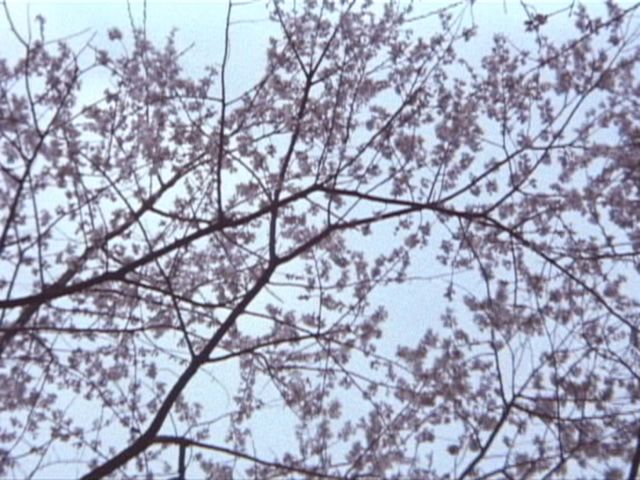Screenings
Films by Haneda Sumiko
Introductions by Ricardo Matos Cabo and Hikari Hori

12 noon
早池峰の賦 / Hayachine no fu (Ode to Mount Hayachine)
D: Haneda Sumiko, Japan 1982, 16 mm, 186 min, Japanese OV with English subtitles
For many years, Haneda Sumiko worked on the idea of making a film about the Hayachine kagura, a ceremonial dance taking place in northern Japan, in the foothills of the mystical Mount Hayachine in Iwate Prefecture. Originally a religious dance performed by monks, kagura is now preserved as cultural heritage by local villagers. Haneda followed two troupes of dancers and musicians from the villages of Take and Ōtsuganai as they rehearsed and performed. More than a film about the kagura, Hayachine no fu focuses on the life of these rural communities at a time when their traditional economy and ways of living were being affected by rapid change. The film is shaped by Haneda’s sensitive approach to nature – to the mountain, the rhythms of the seasons, and the passage of time – and draws a complex picture of rural life in early 1980s Japan, on the cusp of tradition and modernity, obsolescence and renewal.
Ricardo Matos Cabo
5 pm
村の婦人学級 / Mura no fujin gakkyu (Women’s College in the Village)
D: Haneda Sumiko, Japan 1957, 35 mm digitized, 25 min, Japanese OV with English subtitles
Haneda Sumiko was born in 1926 in Dalian, China (soon to be Japanese-occupied Manchuria). Her career began at Iwanami Productions, a company making educational and promotional films, founded in 1950. Over three decades, Haneda made over eighty films as an Iwanami employee. The first of these was Mura no fujin gakkyu, a film commissioned by the Ministry of Education to promote women’s education across Japan. Haneda spent more than forty days in the village of Iwane, working together with local women to depict their study group. Describing her approach, Haneda writes, “When making a documentary film, filmmakers have different attitudes toward filmmaking and they approach the issues in a variety of ways. In my view, when shooting a film of residents, it is important to bear in mind that you are building a lifelong relationship.”
薄墨の桜 / Usuzumi no sakura (The Cherry Tree with Gray Blossoms)
D: Haneda Sumiko, Japan 1977, 16 mm, 43 min, Japanese OV with English subtitles
Usuzumi no sakura was Haneda’s first independent venture, following more than twenty years of employment at Iwanami Productions. In 1969, she visited a cherry tree in Gifu Prefecture said to be planted in the sixth century, making it one of the oldest in the country. As Haneda later recounted, when faced with the tree’s ancient, animistic majesty, a thought entered her mind: “With this tree, and this tree only, I could make a movie.” She initially planned to use poetry written by her younger sister in the film, but only one year later her sibling died of cancer. Haneda returned to the project in 1972, filming the solitary tree intermittently over two and a half years to capture its changing state across four seasons. The result is a poetic reckoning with mortality and memory at the crossroads of the human and nonhuman, anchored by a female voice-over and haunting appearances of an adolescent girl.
7.30 pm
AKIKO—あるダンサ—の肖像— / Akiko aru dansa no shozo (Akiko – Portrait of a Dancer)
D: Haneda Sumiko, Japan 1985, 16 mm, 107 min, Japanese OV with English subtitles
The starting point for this film was dancer and choreographer Kanda Akiko’s desire to document her own working process as she creates a new piece. Haneda Sumiko captures rehearsals and performances of the well-established modern dancer, a former student of Martha Graham, then approaching fifty years old. Akiko aru dansā no shōzō contrasts the public figure of the dancer, her relentless energy, and the development of her work with an intimate portrait of her personal space, physical frailty, humble life, and family. Almost thirty years later, in 2012, Haneda made another film, Soshite akiko wa . . . Aru dansā no shōzō (And Then Akiko Is … A Portrait of a Dancer) to document Kanda’s last performances before dying of cancer. The film is a testimony to Haneda’s dedication and attachment to her subject.
Ricardo Matos Cabo